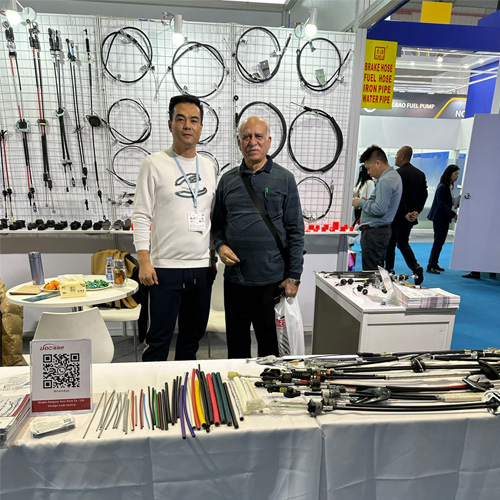Gear Shift Linkage - Enhance Your Driving Experience
Understanding Gear Shift Linkage An Essential Component of Modern Vehicles
In the realm of automotive engineering, the gear shift linkage plays a crucial role in the operation of a vehicle's transmission system. This component acts as the intermediary between the gear lever, which the driver interacts with, and the transmission itself, which ultimately engages the appropriate gear. Understanding how gear shift linkage works can enhance our appreciation for the complexity and functionality of modern vehicles.
Gear shift linkage systems can be broadly categorized into two types mechanical and electronic. Traditional mechanical linkages utilize rods, cables, and levers to connect the gear shift lever to the transmission. When a driver moves the gear lever, the mechanical linkage translates this action into movement within the transmission, allowing it to engage or disengage gears smoothly. The simplicity of mechanical systems often makes them easier to maintain, but they can be prone to wear and tear over time, leading to issues like misalignment and stiffness in gear shifting.
In contrast, modern vehicles are increasingly adopting electronic gear shift linkages. These systems utilize sensors and electronically controlled actuators to perform gear shifts. The advantage of electronic linkages lies in their precision and responsiveness. By relying on electronics, manufacturers can create more sophisticated transmission systems, such as dual-clutch transmissions (DCT) and continuously variable transmissions (CVT). These systems not only enhance the driving experience through smoother gear transitions but also contribute to improved fuel efficiency by optimizing gear selection based on driving conditions.
gear shift linkage

Regardless of the type of gear shift linkage used, ensuring its proper functioning is imperative for vehicle safety and performance. A malfunctioning gear shift can lead to difficulties in changing gears, which may compromise the driver’s control over the vehicle. Regular maintenance checks that include inspecting the gear shift linkage can help detect and rectify potential problems before they escalate.
Moreover, advancements in technology have led to the introduction of features such as adaptive and programmable gear shift linkages. These innovative systems can learn a driver’s habits and adjust gear shift patterns accordingly, providing a more personalized driving experience. Combined with features like paddle shifters and sport modes, these linkages democratize driving performance, allowing the average driver to experience the thrill of a racecar without extensive training.
The ergonomics of gear shift linkage design is another aspect worth mentioning. In the cabin, gear shift levers are strategically positioned for easy reach and operation. The design can influence the overall driving comfort and can be tailored to enhance the driving experience. Modern interiors are now featuring sleek and compact gear shifters that integrate with digital dashboards, providing a cleaner and more intuitive interface for the driver.
In summary, the gear shift linkage is a fundamental component that bridges the driver’s intentions with the vehicle’s performance. Whether mechanical or electronic, these systems are designed to provide drivers with the ability to control their vehicle effectively and safely. As technology continues to evolve, we can expect gear shift linkages to become even more advanced, improving not just vehicle performance but also the overall driving experience. Whether for the enthusiast or the everyday commuter, understanding and appreciating this essential automotive component enriches our knowledge of vehicle dynamics and design.
-
Upgrade Your Vehicle with High-Quality Handbrake CablesNewsNov.01,2024
-
Optimize Your Bike's Performance with Quality CablesNewsNov.01,2024
-
Enhance Your Vehicle's Performance with Quality Clutch ComponentsNewsNov.01,2024
-
Elevate Your Vehicle's Performance with Quality Throttle CablesNewsNov.01,2024
-
Elevate Your Vehicle's Performance with Quality CablesNewsNov.01,2024
-
Affordable Solutions for Your Cable NeedsNewsNov.01,2024
